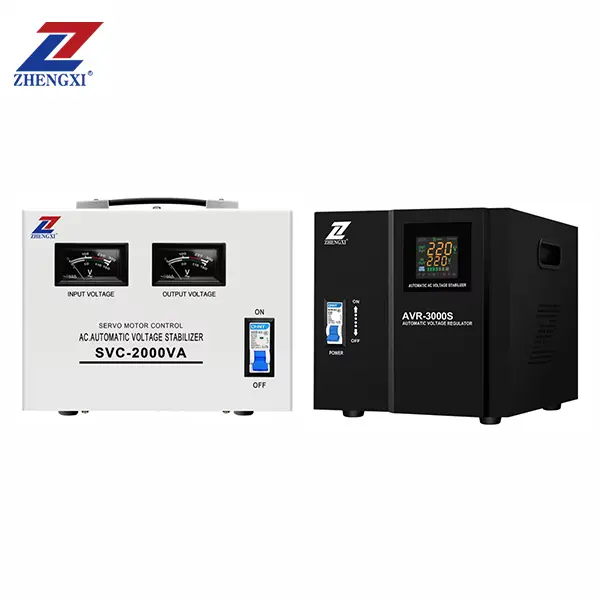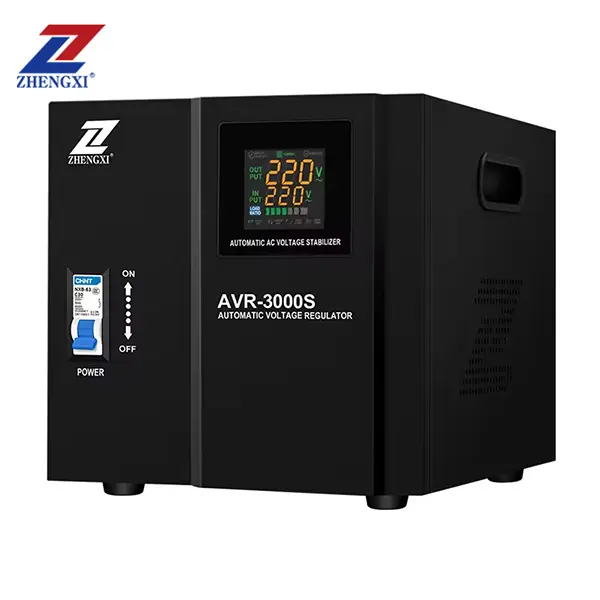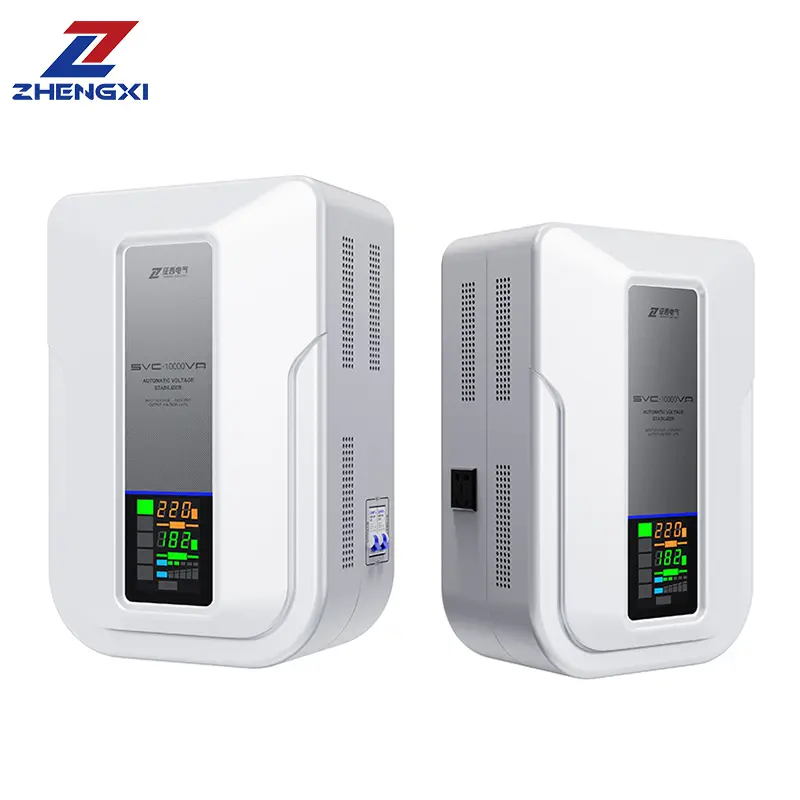In today’s digital era, computers are at the core of productivity, entertainment, and critical business operations. However, unstable utility power—such as voltage sags, surges, and harmonic distortion—continues to pose serious threats to computer hardware, data integrity, and system uptime. To address these challenges, automatic voltage regulators (AVRs) play a vital role in protecting computer systems. Often integrated into uninterruptible power supplies (UPS) or used as standalone stabilizers, Auto Voltage Stabilizers serve as the first line of defense against power fluctuations. They correct voltage irregularities in real time—without draining battery power.
What Is an AVR?
An Automatic Voltage Regulator (AVR) is a feedback‑based control system that continuously monitors input voltage and applies corrections—boosting low voltages or bucking high voltages—to maintain an output within a tight band around the nominal level (e.g., 110 V or 230 V) en.wikipedia.org. Unlike surge protectors that block high‑amplitude spikes, AVRs actively correct both undervoltage (brownouts) and overvoltage events, ensuring seamless power delivery to connected devices.
Key Functions of AVR for Computer Use
- Voltage Correction: Raises low voltage (e.g., 90 V → 110 V) and lowers high voltage (e.g., 140 V → 120 V).
- Real‑Time Sensing: Detects deviations as small as ±5–10% from nominal.
- Continuous Operation: Engages instantly without switching to battery mode, preserving UPS battery life.
- Protection Against Harmonics: Filters out high‑frequency noise and electromagnetic interference (EMI/RFI) commonly generated by industrial or household appliances en.wikipedia.org.
II. Application Areas for AVR in Computing
AVR technology is widely adopted wherever sensitive electronics require a stable power source. Typical application fields include:
- Home and Office PCs: Protects desktops, all‑in‑ones, and peripherals against brownouts and surges.
- Gaming Rigs and Workstations: Ensures graphics cards and high‑end CPUs receive consistent voltage for peak performance.
- Small Business Servers: Maintains uptime for file servers, NAS units, and network switches.
- Point‑of‑Sale (POS) Systems: Prevents transactional errors and data corruption in retail environments.
- Home Office Setups: Guards WFH computers and VOIP equipment against grid instability in suburban and rural areas.
III. Market Trends and Industry Outlook
The global Voltage Stabilizer System Market was valued at USD 22.4 billion in 2024 and is projected to reach USD 30.6 billion by 2030, expanding at a CAGR of 5.4%. This growth is driven by rising adoption of consumer electronics, increased investment in data centers, and heightened awareness of power quality’s impact on equipment longevity researchandmarkets.com. Additionally, as voltage stabilizer factories ramp up production to meet demand in emerging economies, prices for voltage stabilizer for computer price are becoming increasingly competitive without compromising on performance.
IV. Technical Parameters and Comparative Analysis
When evaluating AVRs for computers, consider these key specifications:
| Parameter | Typical Range / Notes |
|---|---|
| Input Voltage Range | 90 V–140 V for 110 V models; 160 V–280 V for 230 V models |
| Output Voltage Regulation | ±1% to ±3% of nominal |
| Response Time | ≤2 ms to correct fluctuations without interruption |
| Load Capacity | Expressed in VA (volt‑amperes) and Watts; e.g., 600 VA/360 W to 1500 VA/900 W |
| Frequency Stability | Filters maintaining 50 Hz/60 Hz within ±0.5 Hz |
| Efficiency | 95–98% under rated load |
| THD (Total Harmonic Dist.) | <5% at full load |
AVR vs. Surge Protector
- Voltage Regulation: AVR actively corrects; surge protector simply clamps high‑voltage spikes.
- Brownout Support: AVR maintains output during sag; surge protector offers no correction.
- Battery Backup: Integrated in AVR‑UPS; unavailable in standalone surge protectors.
- Data Protection: AVR‑UPS enables graceful shutdown through software; surge protector cannot.
V. Differentiators: Why Our AVR for Computer Stands Out
- Advanced Solid‑State Control: Uses multi‑tap transformers with electronic switching for sub‑millisecond response.
- Minimal Audible Noise: Special damping materials reduce hum often associated with electromagnetic tap‑changers.
- Compact Form Factor: Ideal for desktops and under‑desk installations offered by leading voltage stabilizer factories.
- Multiple Outlets & Ports: Dedicated AVR outlets (for computers) plus surge‑only ports for printers and routers.
- Smart Monitoring Software: USB/RS‑232 interface enables real‑time voltage graphs and automated shutdown schedules.
VI. Purchase Advice and Selection Guide
- Determine Your Load:
- Sum the wattage of your computer, monitor(s), and essential peripherals.
- Add a 20–25% buffer for future expansion.
- Choose the Right VA Rating:
- Example: A 500 W PC + 100 W monitor = 600 W → Select a 1000 VA/600 W or higher.
- Check AVR Regulation Range:
- For areas with frequent dips, opt for models handling ±20–25% from nominal.
- Assess Runtime Needs (if UPS):
- 3–5 minutes is sufficient for safe shutdown.
- 10+ minutes allows continued work during brief outages.
- Evaluate Features:
- HTML ports (USB, Ethernet) for surge protection of network devices.
- LCD panels for real‑time voltage and load display.
- Compare Prices:
- Voltage stabilizer for computer price varies by capacity and brand.
- Entry‑level 600 VA models start around USD 50–80; premium 1500 VA units range USD 150–250.
VII. FAQ
Q1: Do I need a standalone AVR if I already have a UPS?
A1: Line‑interactive UPS units include AVR functionality, so a separate stabilizer is unnecessary. However, if you’re using a surge‑only UPS, adding a dedicated AVR can enhance brownout protection en.wikipedia.org.
Q2: How does AVR affect UPS battery life?
A2: AVR corrects minor fluctuations without switching to battery, preserving battery cycles for actual outages. This extends battery longevity and reduces replacement costs.
Q3: Can an AVR protect against lightning strikes?
A3: No. AVRs regulate voltage within a certain band but aren’t designed to dissipate extreme transient energy. Use a specialized surge protector with high joule ratings in conjunction with an AVR for comprehensive protection.
Conclusion
An automatic voltage regulator for computer is no longer a luxury—it’s a necessity for anyone seeking to protect hardware investment, ensure data integrity, and maintain uninterrupted productivity. By understanding core concepts, application scenarios, market trends, and technical parameters, you can confidently select the best voltage stabilizer for computer setups. Whether you’re outfitting a home office or a small server room, investing in a quality AVR—backed by reputable voltage stabilizer factories—ensures your systems remain resilient in the face of unpredictable power conditions.









